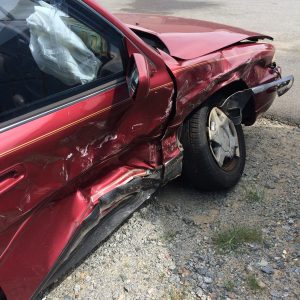
Winter is upon us; bringing with it lots of holiday spirit, warm drinks, and outdoor sports. As fun as skiing, snowboarding, and snowmobiling may be, these activities can be extremely dangerous for both beginners and those who are more advanced. When people are properly trained and are using safe practices, winter sports injuries are fairly easy to prevent. However, sometimes an accident is caused by another person’s behavior. If you are injured in an accident that is the fault of another skier or snowboarder, you may be able to sue them for negligence or recklessness and recover compensation for your injuries. Our experienced personal injury lawyers can help you through this stressful and often painful time and fight for your rights in the legal system.
During the 2017-2018 winter season in the United States, 14,000 injuries and 37 fatalities occurred in connection with skiing or snowboarding. These accidents can happen in several ways, but typically they are caused by skiing too fast in heavily populated areas, not giving another person their right of way, or stalling in areas that are designated trails. The severity of the resulting injuries can range from broken bones to brain injury, and even death.
With snowmobiling, approximately 200 deaths and 14,000 injuries occur each year. Considering that a snowmobile typically weighs around 500 pounds and can travel at a maximum speed of 200 miles per hour; these numbers are not surprising. These accidents usually happen due to intoxication, untrained drivers, poor judgment, exorbitant speed, or vehicle defects. If you are injured in a snowmobiling accident due to someone else’s fault, you may have a personal injury claim. In the saddest scenario, if your loved one is killed in one of these accidents, your family may have a wrongful death claim.
 once the accident has happened, the danger has not necessarily passed. Moreover, liability—or who is responsible—can be especially difficult to determine. So, how can you figure out who is at fault, and what should you do if you have been involved in a multi-car accident?
once the accident has happened, the danger has not necessarily passed. Moreover, liability—or who is responsible—can be especially difficult to determine. So, how can you figure out who is at fault, and what should you do if you have been involved in a multi-car accident? Illinois Personal Injury Lawyer Blog
Illinois Personal Injury Lawyer Blog



 Many of us love our furry friends and would never expect a dog to hurt us. Unfortunately, however, dog attacks do happen, and the resulting injuries can be serious. So, who is liable when a dog bites someone? In many states, owners are only responsible if they have a reason to believe that their dog might hurt someone, for example, if their dog has bitten someone before. In Illinois, however, dog owners are liable if their dog hurts someone, regardless of whether the owner had any forewarning that their dog might be dangerous.
Many of us love our furry friends and would never expect a dog to hurt us. Unfortunately, however, dog attacks do happen, and the resulting injuries can be serious. So, who is liable when a dog bites someone? In many states, owners are only responsible if they have a reason to believe that their dog might hurt someone, for example, if their dog has bitten someone before. In Illinois, however, dog owners are liable if their dog hurts someone, regardless of whether the owner had any forewarning that their dog might be dangerous. Halloween is a time of year that many people–adults and children alike–look forward to. It’s an exciting time of year with lots of fun things to do, from Halloween parties to haunted houses to trick-or-treating. However, it’s also a dangerous time of year.
Halloween is a time of year that many people–adults and children alike–look forward to. It’s an exciting time of year with lots of fun things to do, from Halloween parties to haunted houses to trick-or-treating. However, it’s also a dangerous time of year. As Illinois moves into phase 3 of COVID-19 reopening, traffic is making a big comeback. You may have noticed that the roads are more crowded, the parking lots are a bit fuller, and the expressways feel more like they did in January and February.
As Illinois moves into phase 3 of COVID-19 reopening, traffic is making a big comeback. You may have noticed that the roads are more crowded, the parking lots are a bit fuller, and the expressways feel more like they did in January and February.
 Young people are showing up at hospitals with lungs that look like those of 70-year-olds. Around the country, people of all ages are suffering from a mysterious lung illness, and vaping could be to blame. Federal health officials are looking into the cases of 450 people hospitalized with breathing illnesses after using e-cigarettes and vaping devices, and at least six deaths have been linked to a vaping-related lung illness.
Young people are showing up at hospitals with lungs that look like those of 70-year-olds. Around the country, people of all ages are suffering from a mysterious lung illness, and vaping could be to blame. Federal health officials are looking into the cases of 450 people hospitalized with breathing illnesses after using e-cigarettes and vaping devices, and at least six deaths have been linked to a vaping-related lung illness. If you are taking Zantac, you should be aware that the FDA and the European Union are investigating whether the heartburn medication, as well as generic versions of the drug, contain high enough levels of the cancer-causing agent NDMA, (N-Nitrosodimeethylamine), to pose a danger to patients.
If you are taking Zantac, you should be aware that the FDA and the European Union are investigating whether the heartburn medication, as well as generic versions of the drug, contain high enough levels of the cancer-causing agent NDMA, (N-Nitrosodimeethylamine), to pose a danger to patients. During accidents, airbags save lives – the National Highway Traffic Safety Administration reports that frontal airbags saved 25,782 lives between 1987 and 2008. But, what about when an airbag
During accidents, airbags save lives – the National Highway Traffic Safety Administration reports that frontal airbags saved 25,782 lives between 1987 and 2008. But, what about when an airbag  Some of the scariest moments on the road occur when a tractor-trailer suddenly decides to pull into your lane, oblivious to the fact that you are in the way, or turns in front of you, unaware that your car is there. At that moment, you realize that the truck is not going to stop because they can’t see you. Usually, you are able to slow down or move into another lane to avoid injury, but for some motorists this situation becomes deadly.
Some of the scariest moments on the road occur when a tractor-trailer suddenly decides to pull into your lane, oblivious to the fact that you are in the way, or turns in front of you, unaware that your car is there. At that moment, you realize that the truck is not going to stop because they can’t see you. Usually, you are able to slow down or move into another lane to avoid injury, but for some motorists this situation becomes deadly. So, you bought a car with a five-star safety rating for your family. But, is the entire family actually safe? A
So, you bought a car with a five-star safety rating for your family. But, is the entire family actually safe? A